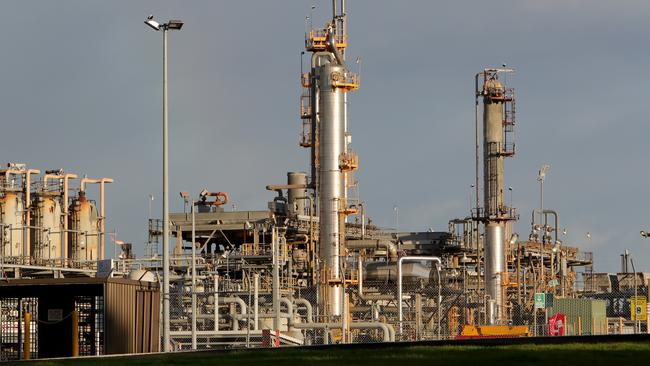BHP takes control of its power
The creation of a new BHP trading unit comes amid concerns over ad hoc national energy policy and its rising power bill.

BHP has created a new Australian trading unit overseeing its gas, electricity and carbon emissions management, as it pushes to assert greater control over its role as both a major energy consumer and producer following several years of market volatility.
The world’s largest miner has been studying the concept for over a year, in part triggered by frustrations after South Australia’s calamitous statewide power blackout in September 2016 which crippled its Olympic Dam mine at a cost of over $140 million.
The collapse of Malcolm Turnbull’s national energy guarantee, which BHP had supported, also triggered the decision, with the producer concerned ad hoc government decisions on energy policy may create inefficiencies in the market and impede investment in dispatchable generation.
Its own rising power bill also played a part. BHP paid $300m for electricity to covers its eastern Australian operations in the 2018 financial year, a steep 60 per cent jump from three years prior.
The decision was also sparked after BHP and its Bass Strait partner ExxonMobil agreed to start selling their own volumes last month from the offshore venture after the competition regulator raised concerns over joint marketing.
“We’re really looking to develop one face into the market to not only work with other participants in a more efficient manner, but also to have a more positive voice around market evolution and working with regulators and policymakers to ensure we have a stable market here,” BHP’s Australian head of energy Sam Bartholomaeus told The Australian.
“BHP as a supplier wants a liquid and transparent market to sell into but as a consumer of energy we want a stable market where we can make investments as well.”
BHP is Australia’s largest producer of natural gas from its assets spanning Western Australia through Victoria and currently accounts for about a third of demand on the east coast alone.
But it’s also a major consumer accounting for more than 500 megawatts of demand at peak times, according to BHP slides.
BHP’s trading desk of about a dozen traders and experts will be based in Melbourne and Perth and will ultimately report to the company’s chief commercial officer Arnoud Balhuizen.
“It’s the concept of connecting electrons,” Mr Bartholomaeus said. “We’ll be marketing all of BHP’s equity gas production, we’ll be buying gas to generate electricity and we’ll be procuring electricity directly to the grid for the national electricity market.
“We’ll also be taking a more co-ordinated role on carbon management and working with our global portfolio to achieve carbon emissions targets.”
The move echoes a move by energy giant Shell which has also created an east coast power trading unit, with some in the market expecting it may look to ultimately enter the retail electricity market.
Shell said its initial focus in Australia is to provide solutions for large industrial customers.



To join the conversation, please log in. Don't have an account? Register
Join the conversation, you are commenting as Logout